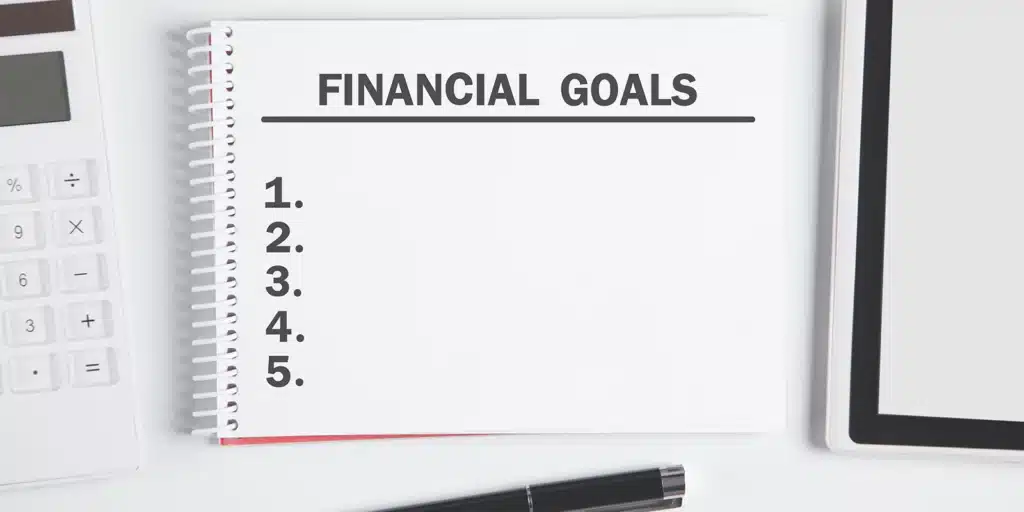Money Saving Challenge: Must Have Financial To-Do List
Posted on February 22, 2021 in Money
It’s a new year, and with it comes a blank financial slate. But how do you start on the right foot, and how do you keep your finances healthy throughout the year? Our money-saving challenge is a to-do list of financial tasks you should address every year to keep your finances in check. It may not be as “fun” as some other challenges, but it will keep you less stressed and prepared to tackle long-term financial goals.
Table of contents
File Income Taxes
The first thing to take care of is often the most dreaded financial task: filing income taxes. There is an old saying that nothing in this world is certain except for death and taxes. Filing taxes can cause anxiety for several different reasons. According to a poll, 46% of tax filers fear they will make a mistake on their taxes, 27% fear receiving a large tax bill, and 19% are afraid of not getting the refund they depend on.

The last date to file income taxes is April 15 (unless an extension is permitted). It’s generally a good idea to bite the bullet and get it over with as soon as possible.
Conduct Annual Financial Checkup
Every year you should set aside time to check how your finances have changed, negatively or positively, over the last year. Sort of like a yearly financial progress report, this is called an annual financial checkup.
When doing your taxes, you will already have most of your financial information available at hand, so before or after filing would be the most convenient time. This will mostly be a self-review of income and expenditures based upon specific financial goals, but some of the more common questions should be:
- Has any progress been made to financial goals? If not, then why?
- What personal changes in the last year will impact financial goals in the future? Should they be altered?
- Are insurances in place to help protect assets?
- Has spending increased last year? If so, then why?
- Has income increased? What are ways to receive more income?
- Did your credit score improve or decline? What are ways to increase the score?
Calculate Debt To Income Ratio
Now that last year’s finances have been addressed and accounted for, it is time to move on to the current year. One of the fastest ways to tell how healthy your finances are is by calculating your debt to income ratio.
The definition of debt to income ratio is the percentage of monthly income that goes toward paying debt. This ratio can be an extremely important factor for mortgage, auto, or personal loan lenders when reviewing applications. Calculating debt to income ratio is a relatively simple process with just a few steps:
1. Calculate Monthly Debt
Add up all monthly debt payments into one total number. This is not to be confused with total expenses. These should only be payments made toward debt. Some examples would be:
- Mortgage or Rent
- Credit Card Payments
- Car Loans
- Student Loans
- Child Support or Alimony
- Other loans or credit lines
2. Calculate Monthly Income
This will be your total monthly income. Depending on situations such as bonuses, overtime, or seasonal jobs, this number may fluctuate but if that is the case, then just get as close to an average as possible.
3. Do The Math
Now that you have the two monthly totals, it is just some basic math to get your debt to income ratio. First, take your monthly debt payments and divide them by your monthly income. Then take this number and multiply it by 100, and you will have your percentage. Here is an example to help illustrate:
Let’s say my monthly debt payments are $1,240, and my monthly income is $3,000. First, I will divide $1,240 by $3,000, which is 0.413. Now I will take that number and multiply it by 100, which would equal debt to income ratio of 41.3%
Depending on how high or low this number is will directly impact what you should focus on next. Too high, and you may find yourself in potentially dangerous waters financially. Here is a list of what debt to income ratios mean:
- 36% or less is considered the healthiest debt load and should be the ultimate goal
- 37% to 42% is not exactly bad, but it could be much better, and you be taking steps to reduce debts
- 43% to 49% is a range that indicates some financial trouble, and steps to reduce debt need to be taken immediately to prevent larger problems from arising
- 50% or more is extremely dangerous and may require financial assistance to fix
Set Financial Goals
Depending on where exactly you land on debt to income ratio will dramatically impact this stage. The first priority, outside of maintaining essentials such as food and shelter, should be to get debt under control. This step will ultimately be whatever you want it to be, but it’s important to set both short-term and long-term goals. Especially so they can be reviewed next year during the annual financial checkup phase.

Whether your goal is to pay off a credit card, get rid of a negative bank balance, or save enough for a vacation, it’s important to write them down in order to help you stay focused on the goal.
With so much happening daily, it can be challenging to keep track of why you are doing what you are doing, and a list can go a long way to helping remind you of what it is all for at the end of the day.
Create New Budget
Depending on what your new (or old) financial goals are will impact how much of a change will be coming to your budget. Whether the goal is lower debt to income ratio, to decrease spending, or to increase savings, a well-tuned budget will go a very long way to helping prioritize expenses.
Budgets can be stressful to make, but they are well worth it. Here are is how to create a budget easily:
- Calculate Income
First, you must figure out your average amount of income per month. It’s important not to overvalue your monthly income, so anything that may have temporarily inflated your income (like a bonus or stimulus check) should not be included.
- Create Monthly Expense List
This list will be everything that money is spent on per month. Similar to calculating income, only focus on common occurrences, so spending extra for an anniversary dinner or expenses for a destination wedding should not be included. Some common examples would be:
- Mortgage or Rent
- Car Payments
- Insurance
- Groceries
- Utilities
- Entertainment
- Clothing and Hair
- Eating Out
- Childcare
- Transportation
- Loans or Debts
- Total Income Vs. Expenses
If your total income is higher than total expenses, you are doing good. If not, there may be some serious issues to address quickly. Ideally, you should be spending 50% of your income on needs, 30% on wants, and 20% on savings or debt repayments.
- Adjust To Decrease Spending and Increase Saving
The idea here is to reduce spending in any way that you can to at least reach 20% saving a month. Things like rent or mortgages will be pretty firm, but some of the “wants” could be reduced temporarily, if not permanently. Whatever funding is cut should go toward repaying debts first and then savings when debts have been paid off.
Final Thoughts About Creating a Financial To-Do List
Creating a financial to-do list can go a long way toward helping you get out of debt and start saving and preparing for the future. The pandemic has taught us that you never know what will happen in the future, and the more prepared you are today, the better off you will be tomorrow. This can even include knowing how to encourage investment habits among youths and your own kids, as we all work to save more money.
Everybody wants to be able to save more money, and sometimes that is much easier said than done. There are a few handy tricks to keep in mind when trying to reduce spending and increase saving but ultimately, it will be up to the individual to create a specific financial to-do list catered to their situation and stick to it.
Related blog posts
Need expert financial advice?
Let TurboFinance connect you with the best consulting services and resources to help you take control of your finances and find a path to build wealth.
Get A Free Consultation Today!